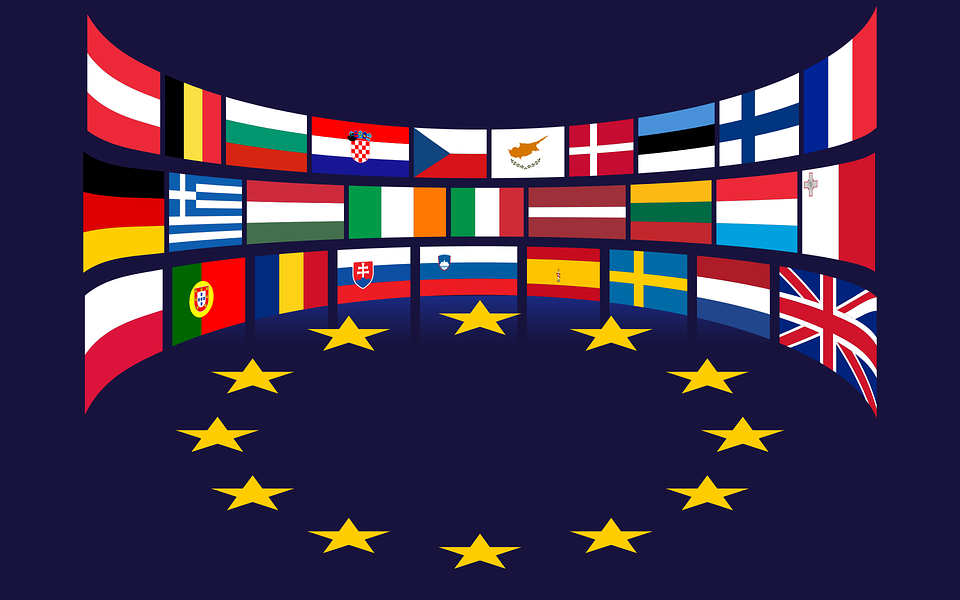Mainstream media claims Obama-Biden partnership has only been happening for 5 months. Former President Barack Obama has been secretly advising the Biden administration for several [more…]
Previously-Deported Costa Rican Criminal Killed During Gun Battle With Texas Deputies
Two deputies also shot during domestic disturbance in Bexar County
Silver And Copper Are Both Flashing The Same Signal — And That Is Setting The Stage For Widespread Panic On Wall Street
There is no telling how high the price of silver could eventually go during the AI boom.
Firegate: Democrat LA Mayor Karen Bass’ Admin Altered Palisades Fire “After-Action Report” & Deleted Evidence
California politician “deliberately and intentionally” changed the report to shield authorities from their failures, says businessman Rick Caruso.
Massachusetts mayor accused of not being able to speak English after requesting a translator during city hearing
During a local hearing, a Massachusetts mayor requested the use of a translator. Now critics are asking if he can even speak English.
Brian A. DePena (D) is the mayor of Lawrence, Massachusetts, a city of nearly 90,000. Approximately 82% of the residents of Lawrence are Latino, according to a 2023 report by WGBH.
‘I practice my English because it’s very important in America.’
Mayor DePena appeared in court earlier this month for a Peace Officer Standards and Training Commission proceeding, where former Lawrence Police Chief William Castro was facing city officials following the revocation of his credentials. Castro was accused of conducting an improper police chase and falsifying a police report.
According to reports, DePena testified on Castro’s behalf and requested a translator for the hearing.
In video of the hearing that has gone viral, a judge is heard considering the request for a translator for the mayor.
DePena has since been accused of not being able to speak English at all. The WGBH report from 2023 also noted that DePena does not speak English on a day-to-day basis.
RELATED: Noncitizen Kansas mayor accused of voter fraud has cast dozens of ballots since 2000, documents show
“I practice my English because it’s very important in America,” DePena said, according to WGBH. “For many years, another administration speaks perfect English and [didn’t provide] opportunity for better education, for businessmen, for kids, safety [in the] community.”
DePena later added, “It’s not easy, because every day [I] to need to make a decision about another person, the future of another person. … If you supported another candidate, no matter. Everyone is equal in my office.”
Since taking office in 2021, DePena has appeared in many videos speaking only in Spanish, including in official city materials.
RELATED: Postal worker allegedly tried to help detainee escape from ICE — and she was on duty at the time
In March 2023, an official city of Lawrence YouTube video showed DePena speaking only in Spanish for an “important message” about public schools. The video is labeled as bilingual, but this appeared to refer to the English subtitles.
That October, DePena appeared in a Spanish-only interview for local health care company Vitra Health.
Additionally a Facebook video post from August 2025 from the mayor’s official account is also entirely in Spanish.
The accusations come in spite of the Trump administration issuing an executive order designating English as the official language of the United States on March 1, 2025.
Blaze News contacted the mayor’s office and the mayor directly about whether he is fluent in English but received no response.
Like Blaze News? Bypass the censors, sign up for our newsletters, and get stories like this direct to your inbox. Sign up here!
News, Spanish, Massachusetts, Spanish only, Official language, Latino, Mayor, Politics
Jason Whitlock blames NFL quarterback decline on DEI and ‘victimhood culture’
The overall performance of quarterbacks in the NFL has plummeted, and BlazeTV host Jason Whitlock believes it has more to do with DEI and black culture than anyone in the NFL would ever be willing to admit.
“All of this emphasis on diversity and black quarterbacks and all of these changes that I feel like they’ve made to make quarterback play easier so that they can meet the quotas that they need to serve their diversity goals,” Whitlock tells BlazeTV contributor Coach JB on “Fearless.”
“This gets me called an Uncle Tom and a coon, but these guys started out the year talking about 16 quarterbacks, starting quarterbacks, are going to be black guys in the NFL in this year, and look at how much progress we’ve made, and black quarterbacks have taken over the league,” he explains.
This is where Whitlock turns to the stats.
“Here we are 14 games into the season. Look at this list. Look at the top teams, and look at the quarterbacks that are quarterbacking those teams. Bo Nix, Sam Darnold, Matt Stafford, Drake Maye, Josh Allen, Trevor Lawrence, Brock Purdy, Mac Jones … Justin Herbert, and Caleb Williams,” Whitlock says.
“Black starting quarterbacks have won 41% of their games this year in the NFL. And my argument — it’s not that they’re black; it’s not their skin color. It’s the culture and the mindset of victimhood and challenging of authority. And as a coach, you should be able to speak to this,” he tells Coach JB.
Coach JB believes it’s because coaches now accept “all this money and are worried about wins only and not the kid and the kid’s future.”
“I coached 19 of 21 years only having a black quarterback. Three to the NFL, 21 Division I quarterbacks — 19 of those were black. So, at the end of the day, none of them got arrested. All of them are successful. Got their degrees. Thirteen of them are coaching Division I football currently,” he tells Whitlock.
“I want to see the current Division I coaches right now who get $3 to $10 million a year who have literally failed the five-star black athlete quarterback,” he adds.
Want more from Jason Whitlock?
To enjoy more fearless conversations at the crossroads of culture, faith, sports, and comedy with Jason Whitlock, subscribe to BlazeTV — the largest multi-platform network of voices who love America, defend the Constitution, and live the American dream.
Video phone, Camera phone, Video, Upload, Sharing, Free, Youtube.com, Fearless with jason whitlock, Fearless, Jason whitlock, The blaze, Blazetv, Blaze news, Blaze podcasts, Blaze podcast network, Blaze media, Blaze online, Blaze originals, Nfl quarterbacks, Black quarterbacks, Nfl woke, Coach jb, Political correctness, Nfl
‘Nazi trash’: Unhinged outrage ensues after ICE posts video of Santa Claus deporting illegal aliens
Critics of the president’s immigration policy went into meltdown mode over a new video from the administration depicting Santa Claus as an ICE agent.
In the video that appears to be generated by artificial intelligence, Santa dons a reddish uniform of Immigration and Customs Enforcement while arresting illegal aliens and sending them on their way on a deportation flight.
‘This is freaking evil. Don’t make Santa the person who removes people from their place of safety.’
“AVOID ICE AIR AND SANTA’S NAUGHTY LIST!” read the message from ICE on the post. “Self-deport today with the CBP Home app, earn $3,000 and spend Christmas at home with loved ones. Holiday incentive is valid through the end of 2025.”
The holiday incentive triples the $1,000 offered previously to illegal aliens who choose to self-deport.
Many online raged against the video and Sec. Kristi Noem of the Department of Homeland Security.
“Nazi trash. Deport yourselves to hell,” replied voice actor Andy Cortez.
“Kristi Noem’s Department of Homeland Security posts deranged video turning Santa into an ICE agent. Making people suffer is just all fun and games for the Trump administration,” responded Mike Sington, a former NBCUniversal executive.
“This is freaking evil. Don’t make Santa the person who removes people from their place of safety. Ever. WTF?” said one critic.
“First off, Santa isn’t even a citizen so why the f**k would he be working with ICE and not give you f**ks coal for eternity? Secondly, you people are f**king ghouls,” replied another detractor.
“As I’ve said many times … Republicans would have nailed Jesus to the cross themselves and handed Trump the spear to stab him with,” responded podcaster Ryan Shead.
“I bet this goes so hard if you are a legitimate sociopath with literally no ability to feel empathy for another human being,” said another critic.
According to an analysis of ICE data by the Guardian, the administration has arrested more than 328,000 and deported nearly 327,000 since the beginning of the new administration. Nearly two million others have voluntarily self-deported, according to a DHS press release.
Like Blaze News? Bypass the censors, sign up for our newsletters, and get stories like this direct to your inbox. Sign up here!
Ice santa claus, Liberal outrage mob, Online backlash, Trump’s immigration policy, Politics
‘My new Fed Chairman’: Trump hints at major changes coming to Federal Reserve amid great economic report
On the strength of a very positive economic report from the Bureau of Economic Analysis, President Trump announced on Truth Social his future plans for the economy — and these plans may not include the current chairman of the Federal Reserve.
On Tuesday morning, Trump introduced and explained “the Trump Rule” when it comes to the economy.
‘Anybody that disagrees with me will never be the Fed Chairman!’
Trump started his post by explaining how markets have changed in response to good financial news, like the news received Tuesday. Rather than rallying as they have in the past, markets go down, he explained, in anticipation of interest rates increasing to offset “potential” inflation.
Trump continued, “That means that, essentially, we can never have a Great Market again, those Markets from the time when our Nation was building up, and becoming great. Strong Markets, even phenomenal Markets, don’t cause Inflation, stupidity does!”
RELATED: Market soars after Fed finally cuts interest rate
Photo by Tasos Katopodis/Getty Images
Trump then hinted at a possible development coming to the Fed leadership: “I want my new Fed Chairman to lower Interest Rates if the Market is doing well, not destroy the Market for no reason whatsoever.”
Trump stated that he will no longer tolerate obstructionists making economic greatness impossible: “A Nation can never be Economically GREAT if ‘eggheads’ are allowed to do everything within their power to destroy the upward slope.”
He added that America will “see numbers that are far more natural, and far better, than they have ever been before.”
“Anybody that disagrees with me will never be the Fed Chairman!” Trump concluded.
The delayed economic report states that “Real gross domestic product (GDP) increased at an annual rate of 4.3 percent in the third quarter of 2025 (July, August, and September), according to the initial estimate released by the U.S. Bureau of Economic Analysis. In the second quarter, real GDP increased 3.8 percent.”
Like Blaze News? Bypass the censors, sign up for our newsletters, and get stories like this direct to your inbox. Sign up here!
Politics, President trump, Donald trump, Federal reserve, Jerome powell, Fed chair, Fed chair jerome powell, The trump rule, Economy, Interest rates, Inflation
Epstein Negotiated Contract With CIA To Move Clandestine Airline Used In Iran-Contra Scandal To Ohio, According To New Files
Alex Jones has been exposing Epstein’s intel agency ties for nearly 20 years!
Putting America first this holiday: Trump DHS ends random work visa lottery
The Trump administration’s Department of Homeland Security is changing regulations governing work visas, arguing the changes will protect American workers.
On Tuesday, the U.S. Citizenship and Immigration Services announced that the DHS had implemented a new rule to change the H-1B recipient selection process, ending the current random lottery system in favor of prioritizing those with higher skills.
‘As part of the Trump administration’s commitment to H-1B reform, we will continue to demand more from both employers and aliens so as not to undercut American workers and to put America first.’
The agency contended that the new policy would “better protect the wages, working conditions, and job opportunities for American workers.”
USCIS noted that the current random selection process has been criticized for “allowing unscrupulous employers to exploit it by flooding the selection pool with lower-skilled foreign workers paid at low wages, to the detriment of the American workforce.”
The not-yet-published final rule states that the new weighted selection process will favor higher-skilled, higher-paid foreign nationals while continuing to allow employers to obtain H-1Bs across all wage levels.
The rule will take effect on February 27 and apply to the H-1B registration season for fiscal year 2027.
Photo by Michael M. Santiago/Getty Images
“The existing random selection process of H-1B registrations was exploited and abused by U.S. employers who were primarily seeking to import foreign workers at lower wages than they would pay American workers,” USCIS spokesperson Matthew Tragesser stated.
“The new weighted selection will better serve Congress’ intent for the H-1B program and strengthen America’s competitiveness by incentivizing American employers to petition for higher-paid, higher-skilled foreign workers. With these regulatory changes and others in the future, we will continue to update the H-1B program to help American businesses without allowing the abuse that was harming American workers.”
In September, President Donald Trump issued a proclamation requiring employers to pay an additional $100,000 per H-1B visa.
“As part of the Trump administration’s commitment to H-1B reform, we will continue to demand more from both employers and aliens so as not to undercut American workers and to put America first,” Tragesser added.
RELATED: Trump admin announces major H-1B visa abuse investigation, but critics want more
Photo by Scott Olson/Getty Images
Up to 65,000 new H-1B visas can be issued each year, with an additional 20,000 for individuals with a master’s degree or higher. Recipients are generally admitted for up to three years, with the option to extend for up to another three years. Some recipients may be eligible for more than six years. Certain organizations, such as some universities and nonprofits, are exempt from the annual cap.
FWD.us estimated that there are as many as 730,000 H-1B holders in the U.S., along with 550,000 of their dependents, including spouses and children. The estimated total number of H-1B holders and their dependents exceeds the population of eight states, including Montana and Rhode Island.
Like Blaze News? Bypass the censors, sign up for our newsletters, and get stories like this direct to your inbox. Sign up here!
News, H-1b, H1b, Work visas, Visas, Donald trump, Trump administration, Trump admin, Department of homeland security, Dhs, U.s. citizenship and immigration services, Uscis, Us citizenship and immigration services, Immigration, Foreign workers, Politics
Comedian Russell Brand charged with new sexual offenses months after first round of charges
Comedian and actor Russell Brand has once again been charged with sexual crimes.
On Tuesday, Metropolitan Police confirmed that Brand is now charged with two new counts, one of rape and one of sexual assault.
Brand will appear at Westminster Magistrates’ Court on January 20 to face the new charges.
These new charges come on the heels of previous charges filed against the actor in April 2025. The five previous charges involve four women and span “more than two decades,” per Reuters.
Brand has denied any criminal sexual misconduct previously.
RELATED: Russell Brand CHARGED on five counts: Justice or a grifter’s retribution?
Photo by Jeff Spicer/Getty Images
Brand has acknowledged a sex addiction in his younger days, but when the charges came out, he said that “what I never was, was a rapist.”
Metropolitan Police Detective Chief Inspector Tariq Farooqi, who is leading the investigation, said: “The women who have made reports, including those connected to the two new charges, continue to receive support from specially trained officers.”
Reuters reported that Brand will appear at Westminster Magistrates’ Court on January 20 to face the new charges.
The trial related to the previous charges is scheduled for June 16.
Like Blaze News? Bypass the censors, sign up for our newsletters, and get stories like this direct to your inbox. Sign up here!
Politics, Russell brand, Sexual assault charges, Rape allegations, Metropolitan police, Westminster magistrates court
From cabbage to cure: The DIY path to gut health through fermentation
(NaturalNews) Sauerkraut, a fermented cabbage dish, is a potent source of probiotics, digestive enzymes and vitamins that support gut health. A healthy gut m…
Toxic time bombs: The 8,500 polluting shipwrecks no one is required to clean up
(NaturalNews) More than 8,500 sunken shipwrecks are leaking oil and toxins into the oceans. Most are World War II wrecks protected by sovereign immunity laws…
Japan to restart world’s largest nuclear plant 15 years after Fukushima disaster
(NaturalNews) Japan’s largest nuclear plant clears final political hurdle for restart. Local assembly approves despite significant resident opposition and pr…
New study links COVID-19 boosters to elevated risk of shingles, a potential gateway to dementia
(NaturalNews) A large Dutch study of over two million records found a measurable increase in shingles risk following COVID-19 vaccination, particularly after bo…
EU cracks down on independent journalism: Euractiv banned from commission briefings
(NaturalNews) The European Commission barred Euractiv from confidential briefings, which editor-in-chief Matthew Karnitschnig alleges is retaliation for the out…
Trump’s Greenland gambit sparks diplomatic crisis as Denmark summons U.S. envoy
(NaturalNews) Denmark formally protested the Trump administration’s appointment of Louisiana Gov. Jeff Landry as a special envoy to Greenland, calling it a viol…
‘It’s a death sentence’: Former Republican senator reveals tragic cancer diagnosis
Former Republican Sen. Ben Sasse of Nebraska announced his terminal diagnosis on Tuesday.
The tragic news was shared in a post on X, where Sasse conceded that he is “gonna die.” Sasse revealed his diagnosis is metastasized stage-four pancreatic cancer, but in the same breath proclaimed his deep faith and hope in Christ.
‘The process of dying is still something to be lived.’
“This is a tough note to write, but since a bunch of you have started to suspect something, I’ll cut to the chase: Last week I was diagnosed with metastasized, stage-four pancreatic cancer, and am gonna die,” Sasse wrote. “Advanced pancreatic is nasty stuff; it’s a death sentence. But I already had a death sentence before last week too — we all do.”
“I’m blessed with amazing siblings and half-a-dozen buddies that are genuinely brothers,” Sasse added. “As one of them put it, ‘Sure, you’re on the clock, but we’re all on the clock.’ Death is a wicked thief, and the bastard pursues us all.
RELATED: Republican senator announces retirement, citing exhaustion: ‘I feel like a sprinter in a marathon’
Erin Schaff-Pool/Getty Images
In the message, Sasse reflected on his many personal and professional accomplishments throughout his 53 years of life, expressing deep gratitude and admiration for his family. Sasse also wrote about the difficulty of navigating tragedy during Christmas, which he described as “a time to orient our hearts toward the hope of what’s to come.”
“Not an abstract hope in fanciful human goodness; not hope in vague hallmark-sappy spirituality; not a bootstrapped hope in our own strength (what foolishness is the evaporating-muscle I once prided myself in),” Sasse said.
“Nope — often we lazily say ‘hope’ when what we mean is ‘optimism.’ To be clear, optimism is great, and it’s absolutely necessary, but it’s insufficient. It’s not the kinda thing that holds up when you tell your daughters you’re not going to walk them down the aisle. Nor telling your mom and pops they’re gonna bury their son.”
RELATED: ‘Unnecessary and protracted’: Elise Stefanik drops out of New York governor’s race
Photo by HANNAH MCKAY/POOL/AFP via Getty Images)
In addition to leaning on God and his family, Sasse said he will pursue medical intervention.
“Death and dying aren’t the same — the process of dying is still something to be lived,” Sasse said. “We’re zealously embracing a lot of gallows humor in our house, and I’ve pledged to do my part to run through the irreverent tape.”
“But for now, as our family faces the reality of treatments, but more importantly as we celebrate Christmas, we wish you peace: ‘The people walking in darkness have seen a great light; on those living in the land of deep darkness a light has dawned. … For to us a son is given (Isaiah 9).”
Like Blaze News? Bypass the censors, sign up for our newsletters, and get stories like this direct to your inbox. Sign up here!
Ben sasse, Senate republicans, Cancer, Cancer diagnosis, Terminal cancer, Christian, Christianity, Politics
Democrat Obama Army official praises $1,776 warrior bonus from Trump admin: ‘Long-overdue moral obligation’
A former U.S. Army official says the federal government’s gift to service members this Christmas is a signal to troops that their sacrifices are appreciated.
Patrick Murphy, a former Democratic congressman from Pennsylvania and the former U.S. undersecretary of the Army for the Obama administration, praised the Warrior Dividend as a sign of respect for military families.
‘There is a troubling tendency to politicize military leadership and culture.’
Last week, President Trump announced that approximately 1.5 million military members would receive a bonus of $1,776 to thank them for their service and to commemorate 250 years of the U.S. military.
According to the former congressman, the payment is well deserved.
“Having served in uniform and later at the Pentagon, I saw firsthand how much our troops give and how often that sacrifice shows up as stress on families, finances, and retention,” Murphy, a decorated former JAG Corps attorney, told Blaze News.
Murphy stated that with a quarter of military families operating on a single income, many troops suffer from significant financial strain, which is “one of the leading causes of our suicide epidemic.”
He added, “The Warrior Dividend isn’t just about pay. It’s about honoring a long-overdue moral obligation. It’s a signal to our troops and their families that their sacrifices are supported and valued.”
RELATED: Teenager sues high school after tribute to Charlie Kirk was called vandalism
JIM WATSON/AFP via Getty Images
Presidential treatment
Murphy told Blaze News about his experience working under different administrations and said they all have made attempts to show support for U.S. troops in their own way.
Citing President Obama’s “groundwork” for reforming the Department of Veterans Affairs, President Biden addressing housing and suicide prevention among service members, and Trump’s financial support for the military, Murphy said he feels “core support for our troops has remained consistent, but the tone, priorities, and follow-through of leadership have varied.”
With that in mind, Murphy urged politicians to treat the military in an apolitical manner.
“There is a troubling tendency to politicize military leadership and culture, something I believe undermines readiness and trust. The Armed Forces function best when they are professional, trusted, and insulated from partisan conflict.”
RELATED: Army, Navy release stunning uniforms ahead of historic matchup honoring America’s 250th birthday
Photo by Teresa Kroeger/Getty Images
Tapping Gen Z
Murphy is noted for having recruited more than 120,000 Gen Z Americans through a military initiative called Soldier for Life. He detailed his recruitment strategy, admitting it was not easy to get messaging through to a new generation. Therefore modern methodology and a fresh approach were needed.
“Gen Z is a group that is smart, driven, and looking for meaning. So we reimagined our outreach and met them where they are — digitally,” Murphy recalled.
The approach included a focus on benefits that would appeal to that generation, like education, leadership training, and careers in artificial intelligence. As well, Murphy said he ensured the core messaging focused on “America, its diversity, its values, and its evergreen need for genuine, authentic leadership.”
“We weren’t just selling a job; we were calling young people to be part of something bigger than themselves. And when you show Gen Z that service is not just honorable but empowering, they respond. That’s how you build the next generation of leaders, in and out of uniform.”
Like Blaze News? Bypass the censors, sign up for our newsletters, and get stories like this direct to your inbox. Sign up here!
News, Obama, Trump, Biden, Us army, Military, 1776, Warrior dividend, Veteran, Recruitment, Politics
Former MLB All-Star calls out Disney Cruise Line for having a ‘man dressed as woman’
A nine-year MLB veteran is taking issue with apparent cross-dressing on a Disney Cruise ship.
Ender Inciarte won three gold gloves with the Atlanta Braves while appearing in one MLB All-Star Game before retiring in 2022.
‘I don’t think it’s hate i just don’t want to normalize that behavior.’
Now, Inciarte is calling out Disney Cruise Line for apparently having a man dressed a woman speaking to kids.
“Hey [Disney Cruise Line] love your cruises!” Inciarte wrote on X. “Except for the part that there are man dressed as woman … thought you already got over it.”
This immediately drew backlash from some readers, including one man who called Inciarte a “little fragile guy” who “gets upset easily while other people live their lives peacefully without bothering anyone.”
The 5-foot-11-inch outfielder replied, according to an X translation, “It wasn’t hatred or a personal attack. It was an opinion based on my convictions. I believe in respecting everyone, but also in calling things by their name without mockery or contempt. Living in peace doesn’t mean silencing one’s conscience. Take care, champion!”
A Tampa Bay baseball fan rudely asked the former player, “Have you considered going to Hell, Ender?”
“No. I’ve been saved from that thanks to Jesus!” Inciarte enthusiastically stated in response.
While it is unclear if Inciarte was drawing from a personal experience or a video he saw online, he explained his reasoning when replying to a reader who said his kids would be traumatized seeing “dudes dressed as women.”
The Venezuelan explained, “Where is my hate? All i am saying is having my kid enter a place where a 6ft tall guy is dressed as a woman and acting like one would traumatize my kid on a family cruise.”
He added, “I don’t think it’s hate i just don’t want to normalize that behavior.”
Photo by George Rose/Getty Images
While Disney has not responded to inquiries from outlets like Fox News Digital to confirm the allegations, this would not be the first time a transgender person or cross-dresser was spotted at a Disney business dealing with children.
In 2024, a family chronicled a transvestite cutting children’s hair and applying makeup at the Bibbidi Bobbidi Boutique at Walt Disney World.
At Disneyland in 2023, the same boutique had a man dressed as a woman working in front of the store to welcome guests and schedule young children for their makeovers.
Like Blaze News? Bypass the censors, sign up for our newsletters, and get stories like this direct to your inbox. Sign up here!
Fearless, Mlb, Baseball, Disney, Disney cruise, Transgender, Sports
Maduro Would Be ‘Smart’ To Get Out, Trump Says, As Russia Reportedly Evacuating Diplomats’ Families
Russia’s foreign ministry calls reports by Associated Press regarding alleged ‘evacuation’ of the Russian Embassy in Venezuela “A LIE.”




















